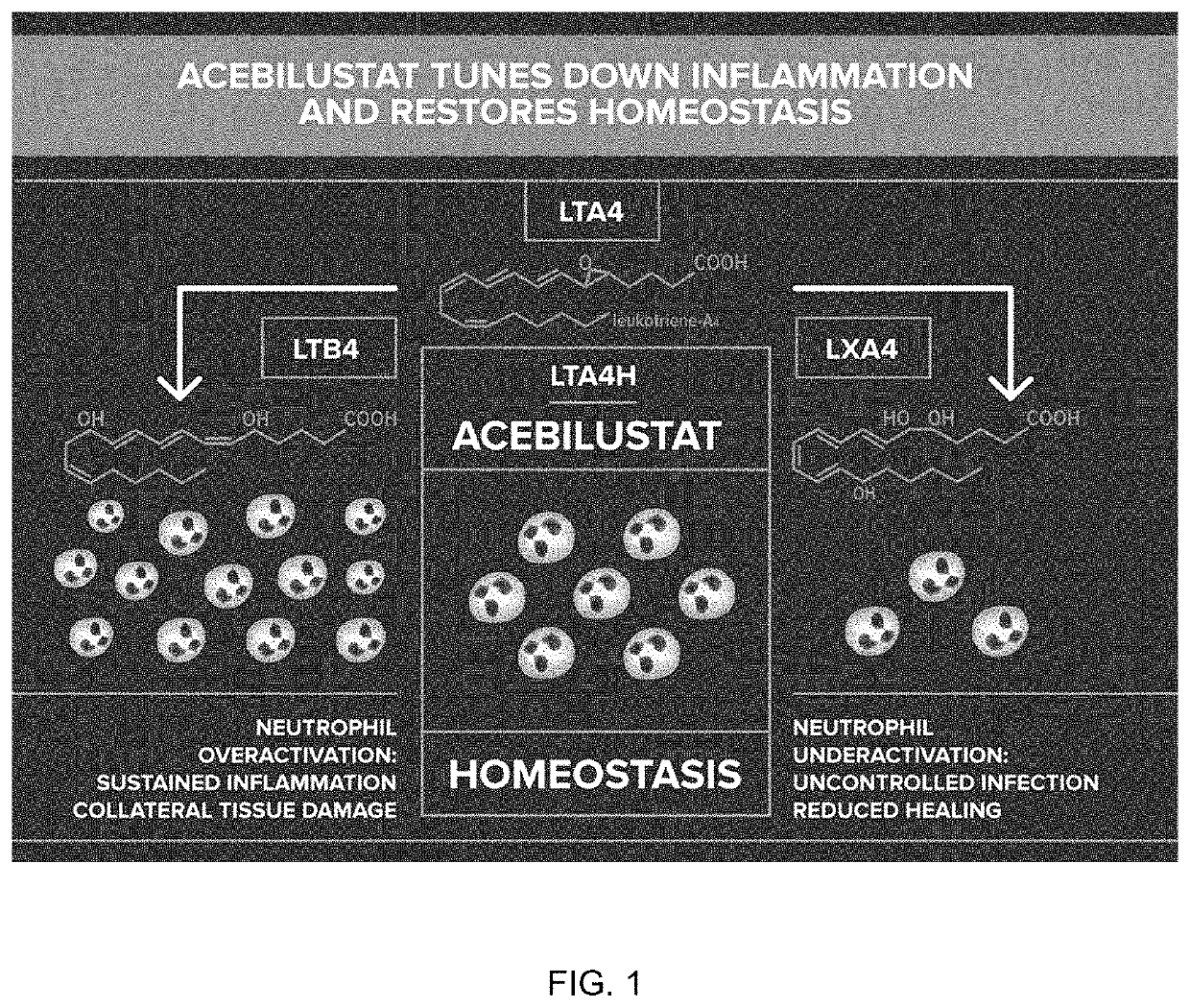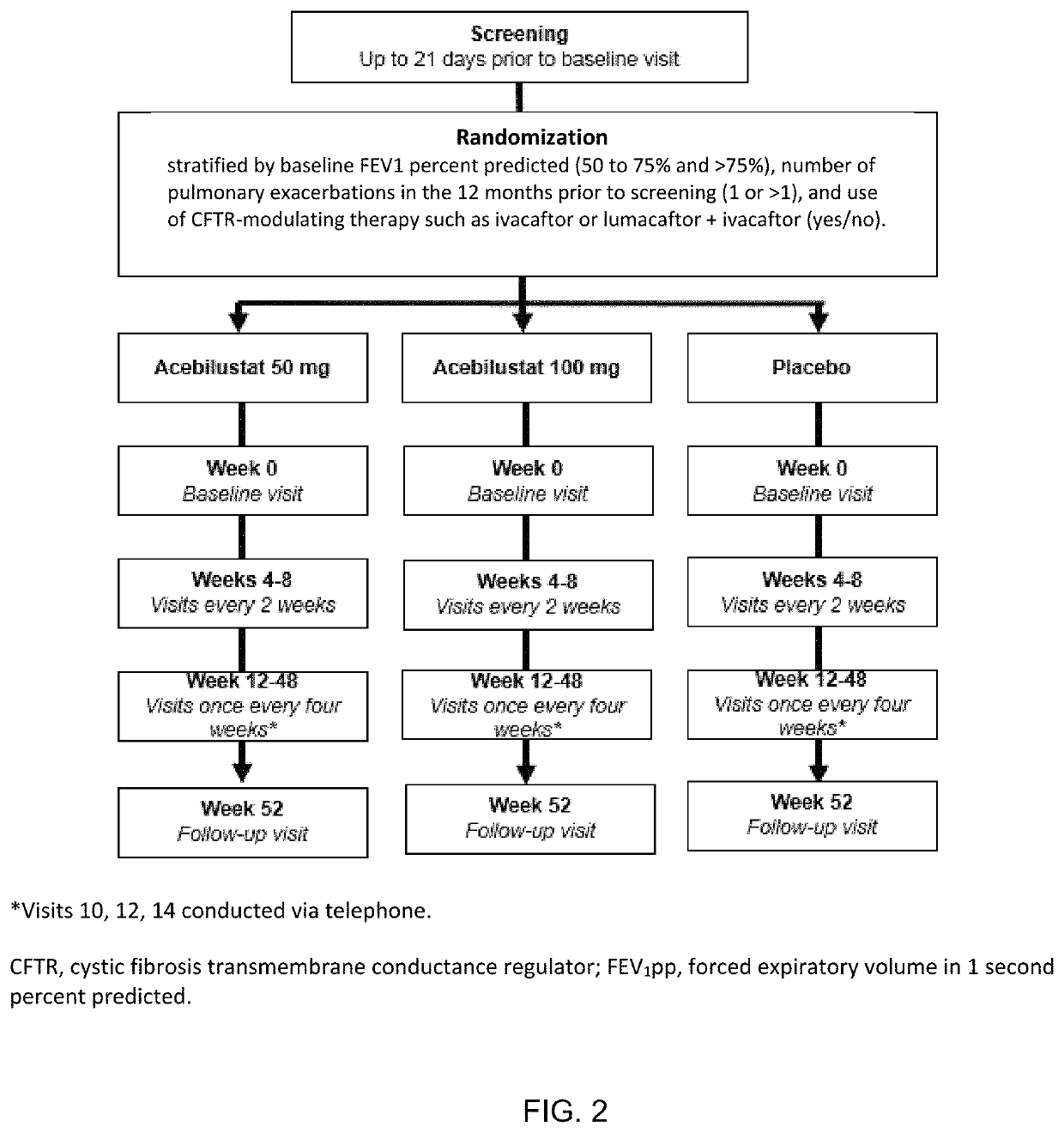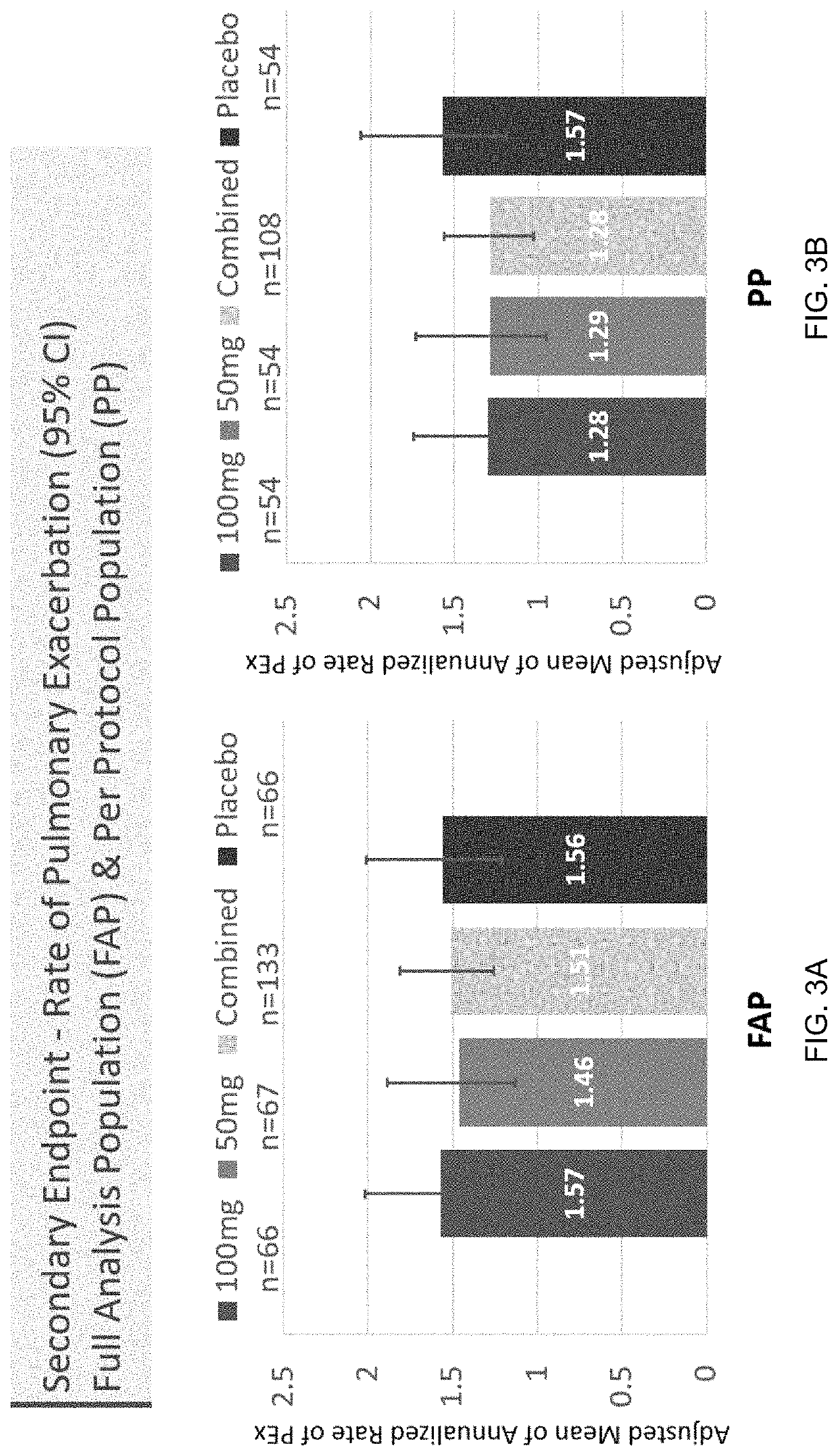Method of reducing pulmonary exacerbations in respiratory disease patients
a pulmonary exacerbation and patient technology, applied in the field of pulmonary exacerbation reduction in respiratory disease patients, can solve the problems of mixed results in anti-inflammatory agents and infrequent use of high-dose ibuprofen, and achieve the effect of reducing the rate, increasing the time to the first pulmonary exacerbation, and reducing the number of pulmonary exacerbations
- Summary
- Abstract
- Description
- Claims
- Application Information
AI Technical Summary
Benefits of technology
Problems solved by technology
Method used
Image
Examples
example 1
: A Phase II Randomized Placebo-Controlled Trial of Once-Daily, Oral Acebilustat in Adult Patients with Cystic Fibrosis—Study Design, Patient Demographics and Results
[0079]Acebilustat is a novel, synthetic, small-molecule leukotriene A4 hydrolase inhibitor in development as a once-daily oral therapy that modulates LTB4 production and targets the inflammatory process in CF [Elborn et al., 2017a]. In two Phase I trials, acebilustat reduced LTB4 production and other inflammatory markers in healthy volunteers and patients with CF [Elborn et al., 2017a, Elborn et al., 2017b]. Based on these promising data, a Phase IIb study, EMPIRE CF (Evaluation of the modulation of the pulmonary inflammatory response in CF) was designed and completed to determine the dose, duration and endpoints for future clinical trial(s). The study was the first proof-of-concept for a novel anti-inflammatory therapy designed to show prevention of progressive loss of lung function and / or reduction of pulmonary exacer...
PUM
 Login to View More
Login to View More Abstract
Description
Claims
Application Information
 Login to View More
Login to View More - R&D
- Intellectual Property
- Life Sciences
- Materials
- Tech Scout
- Unparalleled Data Quality
- Higher Quality Content
- 60% Fewer Hallucinations
Browse by: Latest US Patents, China's latest patents, Technical Efficacy Thesaurus, Application Domain, Technology Topic, Popular Technical Reports.
© 2025 PatSnap. All rights reserved.Legal|Privacy policy|Modern Slavery Act Transparency Statement|Sitemap|About US| Contact US: help@patsnap.com



